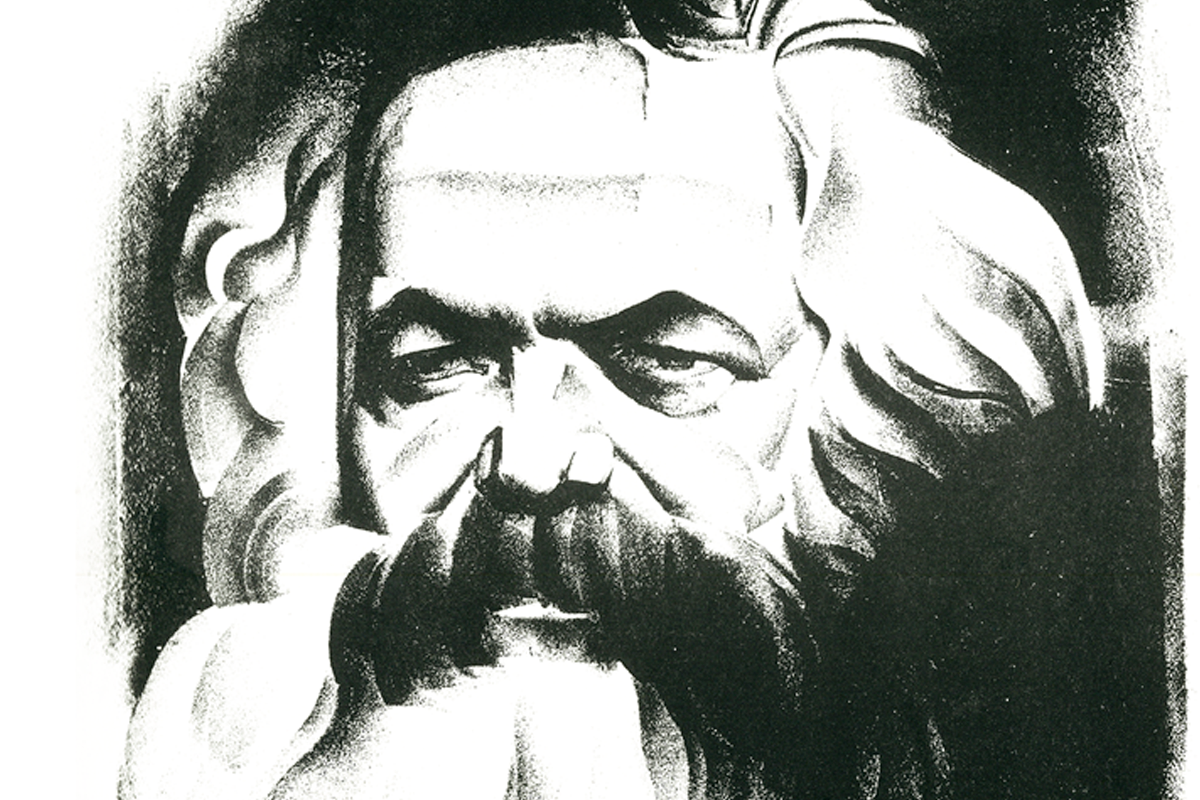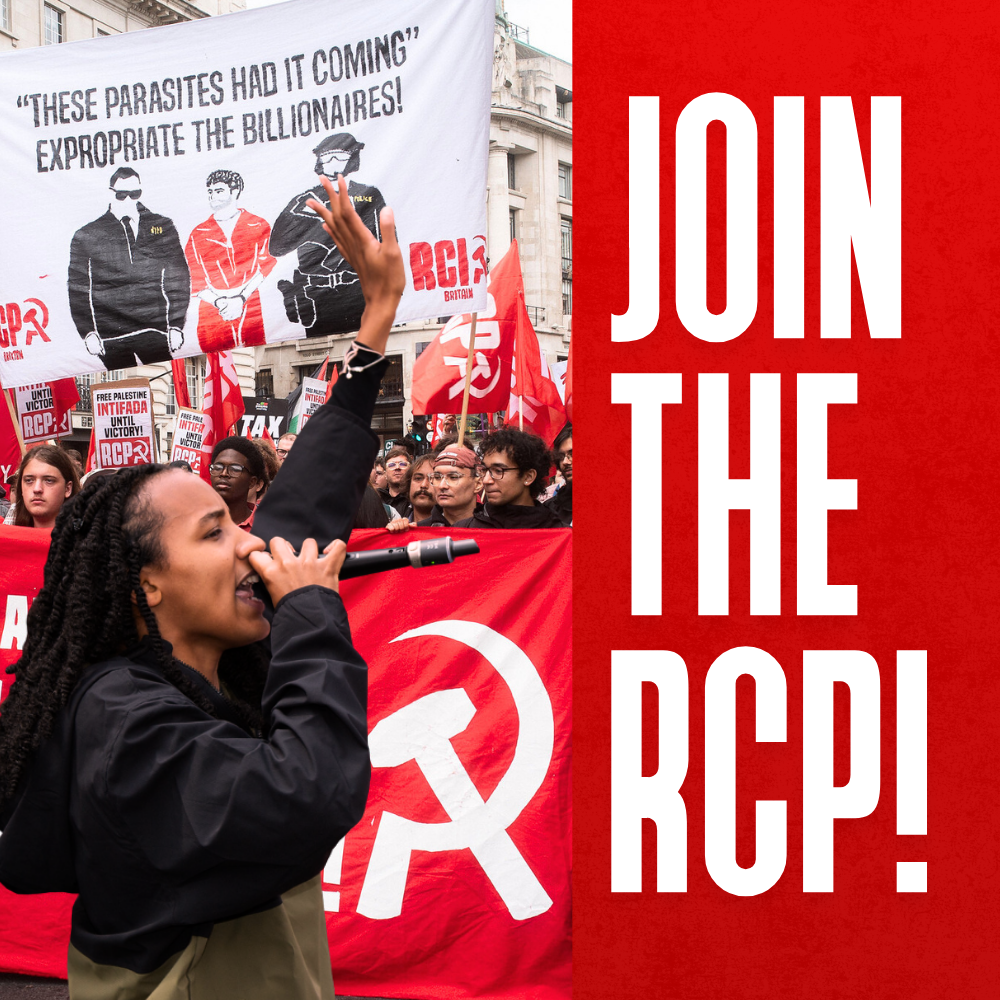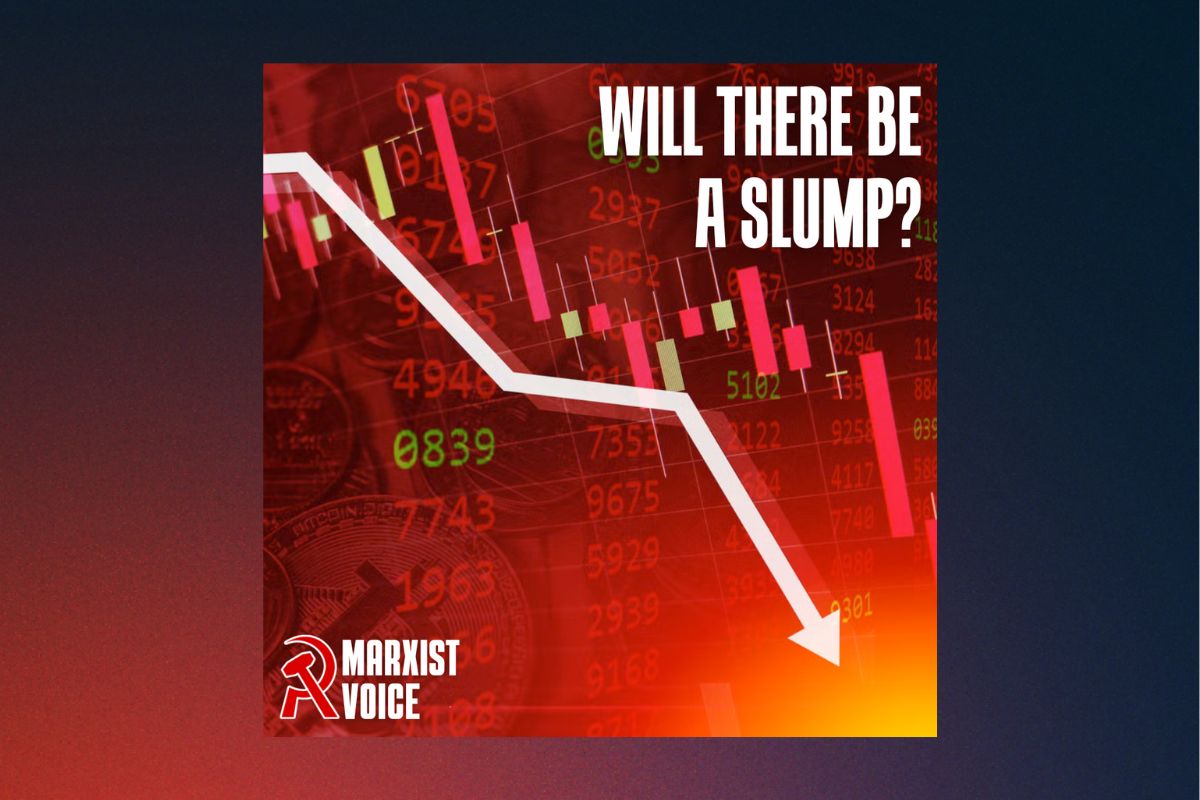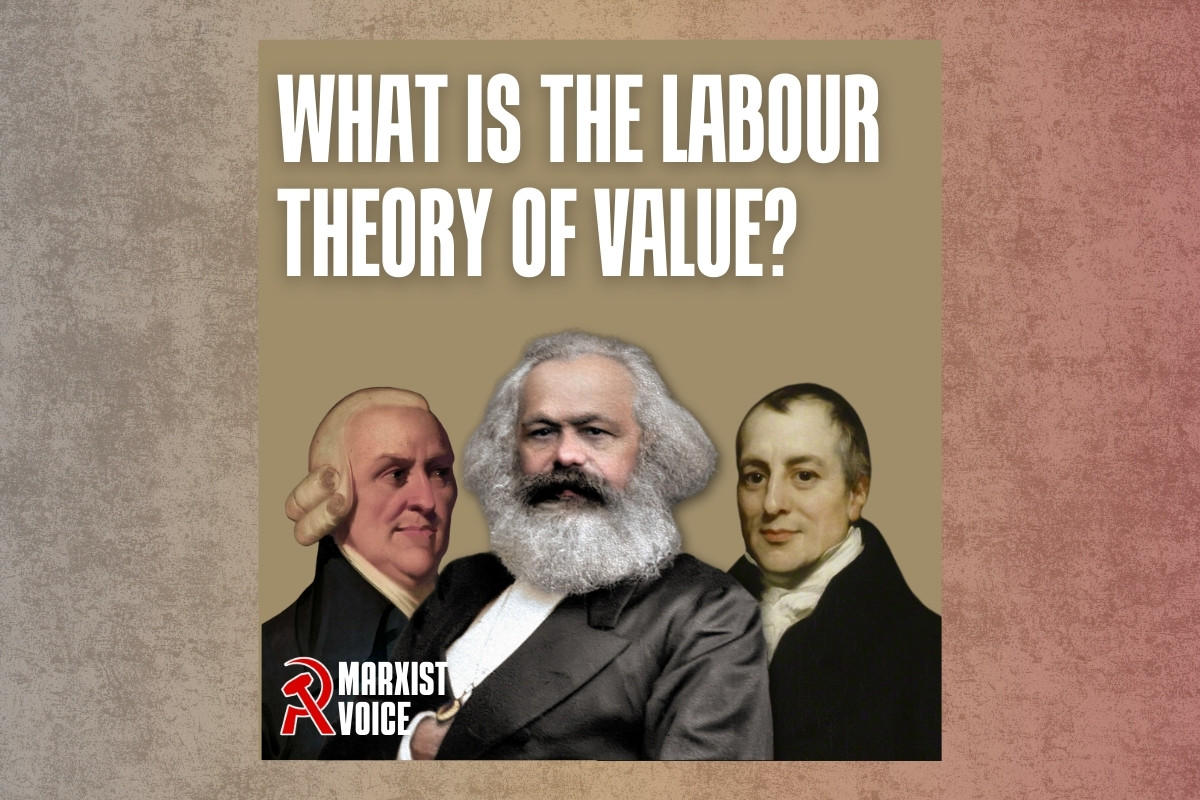The history of capitalism is marked by a number of turning points: epoch-making events that irreversibly transformed the landscape of the world economy, and in turn society.
World War One was such an inflection point. So was the 1929 Wall Street Crash and the subsequent Great Depression of the 1930s. The Second World War similarly altered the course of history.
In the 1970s, a series of shocks marked the end of the postwar boom and the beginning of a protracted global crisis.
This was overcome – temporarily and partially – by an all-out assault on the working class throughout the 1980s by the capitalists and their representatives, including President Ronald Reagan in the USA and Margaret Thatcher’s Tory government in Britain.
‘Globalisation’ – accelerated by the collapse of the Soviet Union, and by the reintegration of China and Eastern Europe into the world market – also provided a new lease of life for capitalism, providing multinational monopolies with access to cheap sources of labour and raw materials.
In combination with sharp attacks on workers’ wages and conditions in the West, this enabled the bosses and bankers to make mega-profits.
Ultimately, however, this merry state of affairs was built on extremely shaky foundations.
To maintain ‘effective demand’ – consumers’ purchasing power – in the face of stagnating real wages, the capitalists unleashed a deluge of cheap credit and easy money into the economy.
The financial system was deregulated, in what became known as the ‘Big Bang’. Both private and public debts ballooned, as lenders encouraged households, businesses, and governments to borrow liberally. An orgy of speculation ensued.
Eventually, this house of cards came crashing down, with the financial crisis and deep slump of 2007/08.
The most zealous apostles of the so-called ‘free’ market suddenly became the biggest advocates for state intervention, as governments everywhere bailed out the banks – nationalising the losses, whilst privatising the profits. It was the biggest rescue of capitalism in its history.
In the process, the gigantic debts of the big banks and finance houses were transferred onto the shoulders of the working class.
This represented a new turning point for capitalism. The age of austerity and neverending crisis had begun.
Theory and action
As with every other capitalist crisis, the 2008 crash was initially described by bourgeois apologists as little more than a freak ‘accident’: the result of greedy bankers, regulatory oversight, and a concatenation of unfortunate circumstances.
In time, however, a growing layer of economic commentators began to question this narrative. Evidence emerged pointing to systemic problems in the build up to the ‘Lehman moment’ that triggered the credit crunch and the subsequent worldwide slump.
In particular, it became clear that the subprime mortgage scandal at the heart of the financial crisis was only the tip of the iceberg. The entire capitalist economy, plagued by overproduction, had become addicted to a steady drip feed of debt.
Far from being a random event, the 2007/08 crisis showed all the hallmarks of a classic crisis of capitalism, as described by Karl Marx around 150 years prior.
As a result, articles began popping up throughout the mainstream press suggesting that ‘Marx was right!’
Previously dismissed as a crank and a crackpot by bourgeois thinkers, increasing numbers began to turn to the German philosopher and economist in search of answers to the unfolding conundrum.
Of course, these learned ladies and gentlemen couldn’t accept Marx’s revolutionary conclusions: that the capitalist system is inherently crisis-ridden, and needs to be overthrown.
Nevertheless, they were at least willing to admit – reluctantly – that his economic writings might be able to provide certain insights into the underlying causes for the crisis.
But it wasn’t just journalists and academics who began dusting off copies of Das Kapital. Workers and youth also started turning to Marx’s ideas, in an effort to make sense of the economic inferno that was wreaking havoc on their lives and livelihoods.
And more importantly, ordinary folk wanted more than a description or diagnosis of the disease. They wanted to know the cure. This meant getting organised – looking for theory as a guide to action.
After all, as Marx himself correctly asserted: “The philosophers have only interpreted the world; the point is to change it.”
Reformism vs revolution
The Great Recession of 2007/08 opened up a new chapter in capitalism’s development – one that we are still living through.
From then on, there was only one dish on the menu: austerity. And politicians of all stripes proved themselves to be more than willing to act as the bosses’ butchers, slashing public services, welfare, and living standards to the bone.
As Isaac Newton showed in nature, however, every action comes with an equal and opposite reaction. And the ruling class’ cuts and attacks soon provoked a wave of mass mobilisations: from the #OccupyWallStreet protests against ‘the 1%’; to the 2010 student demonstrations in Britain against tuition fee hikes; to the anti-austerity Indignados movement in Spain.
In the following years, this same anger and energy found a political expression, in the form of Bernie Sanders, Jeremy Corbyn, Podemos.
Ultimately, however, none of these social and political movements were able to change the course of events – not for want of determination on the part of the masses, but because of the limits of the left leaders.
Sanders, Corbyn, and Iglesias (the main founder and spokesperson of Podemos) all spoke in radical terms, railing against the billionaires and bankers; against the elites and the establishment.
But at root, their programmes remained within the confines of capitalism. In one way or another, they and their advisors all pushed for policies that amounted to an attempt to patch-up the decrepit capitalist system.
As with Syriza in Greece, none of these left reformists were willing to break with capitalism. In turn, at every crucial juncture, instead of mobilising their supporters en masse to struggle for genuine socialist change, they capitulated to the ruling class and its agents.
The consequence of this was a series of defeats and betrayals. And ever since, there has been an enormous political vacuum – partially filled today by the rise of right-wing populists like Trump, Farage, and Le Pen, who demagogically tap into the anti-establishment mood in society.
It is essential that radicalised workers and youth learn from these lessons. The so-called ‘realistic’ and ‘pragmatic’ path of reformism is in fact a complete dead-end. Only a real revolutionary alternative can offer a way forward.
Contradictions and catastrophe
This reality has become all the more clear over the course of the last decade, as capitalism lurches from disaster to catastrophe.
For a while, bourgeois politicians and policymakers thought they had stabilised the situation.
Austerity was chipping away at the accumulated mountain of debt, or at least curbing its continued buildup. Privatisation, casualisation, outsourcing, and offshoring were all helping to boost the bosses’ profits. And loose monetary policy – including low interest rates and quantitative easing – was providing a counter-balance, artificially propping up demand.
At various points, the ruling class and its mouthpieces even talked up the idea of ‘green shoots’ of growth for the world economy. But on every occasion, their sanguine hopes have quickly been dashed.
In truth, throughout this period, there has been no real recovery – particularly from the perspective of the working class. Real wages have barely increased, if at all. In many cases, living standards have actually declined. Meanwhile, the billionaires have amassed ever-greater fortunes.
Importantly, every attempt by the ruling class to get out of the crisis has only injected more and more contradictions into the system, preparing the way for bigger crises.
State bailouts and Keynesian stimulus appear on the other side of the ledger as huge government debts. Cheap money has fuelled frothy speculative bubbles in everything from stocks and shares, to real estate and cryptocurrencies. And productivity growth has stagnated, despite all the latest technology, due to an undead army of ‘zombie’ firms – businesses kept alive solely thanks to a continual supply of low-interest loans.
Endless cuts and attacks, meanwhile, have fomented a mood of explosive anger, which the capitalist class and its institutions are finding increasingly difficult to contain.
Every attempt to restore the economic equilibrium, in other words, has only served to generate even greater social and political instability – and vice-versa.
Combustible cocktail
A fragile system, riddled with tensions, will be prone to shatter; vulnerable to any manner of jolts or tremors.
What we are witnessing, in this respect, is an intractable organic crisis of capitalism, in which decades of brewing contradictions are coming together, exploding to the surface.
Prior to 2008, a mass of inflammable material built up within the global economy. In such a situation, any small spark can ignite a blaze.
Unexpected events like the pandemic and the Ukraine war, meanwhile, have poured petrol on this combustible cocktail, heightening all the existing contradictions.
The corona-crash had the potential to provoke a new deep slump. A return to the 1930s loomed, as lockdowns paralysed production, upset supply chains, and damaged demand. The stock market plummeted. Oil prices even turned negative. A protracted depression was on the cards, as the economy went into freefall.
Had things been left to the ‘invisible hand’ of the market, we undoubtedly would have witnessed the biggest crisis in the history of capitalism.
Fearing the social and political consequences of such devastation, however, the ruling class once again intervened like never before.
The custodians of capitalism threw everything they had at the situation. In effect, as COVID-19 raged, their moribund system was put into suspended animation, with the iron lung of the state used to provide unlimited life support.
Governments and central banks flooded the world economy with free money. The banks and big business were offered blank cheques to keep them afloat.
An estimated worldwide total of $16 trillion was doled out in state stimulus. $10 trillion in newly-printed money was pumped in by central banks. In the USA, pandemic-related support amounted to almost 25 percent of GDP.
For the most part, this represented what Marx referred to as ‘fictitious capital’: the circulation of money in the economy without an accompanying circulation of real value, embodied in commodities.
As lockdowns eased, pent-up demand clashed against supply-side bottlenecks. Too much money was chasing after too few goods. This was a recipe for inflation.
At an annualised rate, price rises in the West reached levels not seen since the 1970s: over 11 percent in Britain and Europe, and over 9 percent in the USA. This generated a backlash of strikes and action.
The conflict in Ukraine added to this disruption. Sanctions on Russian oil and gas caused energy prices to skyrocket, leading to panic for households and industrialists alike.
And more recently, the European establishment’s rearmament drive has added to the inflationary pressures in the economy, diverting resources away from productive investment towards means of destruction.
Capitalist nightmare
The capitalist class has stumbled through these crises. But in the process, they have used up all the ammo in their arsenals, restricting their room for manoeuvre in the face of each new dilemma.
Repeated bailouts – in response to the 2008 slump, the pandemic, and the energy crisis – have resulted in unprecedented and unsustainable national debts.
Across the OECD group of advanced capitalist countries, the overall government debt-to-GDP ratio stands at 110 percent, up from 72 percent prior to the 2008 crisis. In Britain, France, and the US, the equivalent figure is now 104 percent, 116 percent, and 123 percent, respectively.
In the world’s poorest countries, total debts are generally smaller. Nevertheless, given the interest on these loans, they represent an even greater economic burden. Hence the increasing possibility of sovereign default and bankruptcy for many nations in Africa, Asia, and Latin America.
At the same time, in order to tame inflation, central bankers have hiked interest rates in recent years, leading to a surge in borrowing costs at a time of already-suppressed demand.
Fanning these flames, meanwhile, at the time of writing, is a rumbling global trade war. This represents yet another shattering shock to the system: a brutal blow to the liberal postwar world order, threatening to undo decades of international economic integration.
The overall result is a perspective of ‘stagflation’: a combination of low, zero, or even negative economic growth, alongside stubborn inflation – made all the worse by the inability of the capitalists, on the whole, to generate significant improvements in productivity.
This scenario would be a nightmare for bourgeois politicians and policymakers.
On the one hand, deflationary policies – austerity and high interest rates – to reduce debts and fight inflation would trigger or exacerbate a slump.
On the other hand, inflationary measures – Keynesian stimulus and loose monetary policies – to boost growth would increase government debts and entrench inflation.
Whatever option the ruling class chooses will be wrong. On a capitalist basis, all roads lead to ruin.
Internationally, this turmoil could even lead to a new depression, as in the 1930s.
The old status quo is long gone. Crisis, cuts, and volatility: this is the new normal under capitalism.
Systemic crisis
The pressures on capitalist politicians are therefore mounting on all sides.
Investors and creditors are demanding that governments implement even sharper cuts, in order to ensure that they get their pound of flesh.
The warmongering establishment is banging the drum of militarism, calling for greater arms spending in the face of heightened imperialist tensions.
And rising protectionism, in the form of tariffs and trade barriers, is only adding to the uncertainty and instability, in a world already wracked by turbulence and turmoil.
As ever, it is workers, the poor, and the vulnerable who are being made to pay for this ever-intensifying crisis. Across the world, the representatives of capitalism are sharpening their knives and wielding the chainsaw, looking to impose a fresh round of savage cuts.
This answers all those who say that austerity is simply a ‘political choice’. The cuts are not ‘ideological’, but the logical result of capitalism in crisis.
Economic chaos and imperialist conflict are intrinsic to a system based on production for profit and market competition. Capitalism breeds austerity and inequality; war and oppression.
At their root, the manifold crises we are living through are all symptoms of the capitalist system’s impasse; a product of the two fundamental barriers to social progress: private ownership of the means of production, and the economic shackles of the nation state.
Yes, there is more than enough wealth in society to provide decent jobs, homes, and services for all; to ensure that everyone has a roof over their head and food on the table.
But under capitalism, these riches and resources are hoarded in the hands of the billionaires, bosses, and bankers. And all of history shows that they will not give up their profits, power, and privileges without a vicious struggle – that is, unless they are forced to by the organised working class.
Fight for revolution
This, ultimately, was Karl Marx’s aim in writing his three volumes of Capital, and much more besides: to arm the workers’ movement with the theoretical weapons that it needed to vanquish its true enemy – the capitalist class.
Through his studies and works, Marx uncovered the underlying dynamics and contradictions of the capitalist system: the pressures and processes that drive the motion of an economy based on the production and exchange of commodities.
Basing himself on the best ideas of ‘political economy’ that came before him, from thinkers like Adam Smith and David Ricardo, Marx showed how capitalism is governed by objective, dialectical laws.
These laws operate blindly and anarchically, behind our backs, imposing themselves upon us like a mystical force. They are invisible and intangible, yet very real.
In particular, Marx developed the law of value: the tendency for goods and services, on average, to be exchanged in proportion to the socially necessary labour time embodied within them.
From this flowed other implications.
Firstly, that the source of the capitalists’ profits is the exploitation of workers’ labour-power – that is, the unpaid (surplus) labour of the working class.
Secondly, that the capitalists – acting as ‘capital personified’ – would seek to squeeze ever-greater profits out of the working class, by driving down wages, intensifying labour, and investing in new technology and machinery.
And finally, that this would lead to an insoluble contradiction, the contradiction of overproduction, as the commodities churned out in the course of capitalist production crashed up against the limits of the capitalist market.
In other words, given that the working class only receives back a fraction of the value it creates, workers’ can never afford to buy up all the goods that they collectively produce.
The capitalists overcome this contradiction by taking the surplus made by the working class and reinvesting it back into production. This leads to increased productive capacity, however, which in turn generates even greater overproduction.
They also have other means at their disposal to circumvent and escape this contradiction, as already outlined: expanding credit to artificially maintain demand; searching for new profitable markets, through colonialism and imperialism; trying to export the crisis elsewhere, through protectionist measures and ‘beggar-thy-neighbour’ policies; or further attacking the working class, in order to maintain and augment their profits.
But this is all similarly a case of kicking the can down the road. And now they are running out of tarmac.
In any case, whilst such steps may be rational for this-or-that capitalist or national capitalist class, the overall outcome – deepening crisis and intensified contradictions – is extremely irrational for the system as a whole.
This reflects the inherent anarchy and dog-eat-dog nature of the capitalist system. The individual interests of Mr Moneybags and his competitors do not align – except when the bosses are collectively threatened by the movement of the working class.
Above all, in this respect, Marx showed that the interests of the working class and the capitalist class are mutually antagonistic. The profits of the 1% come at the direct expense of the rest of us; through the exploitation of working people and the planet.
This is why, as Marxists, we say that there can be no nicer, kinder, greener version of capitalism. It is why we are communists, fighting to overthrow this rotten system and those who uphold it.
View this post on Instagram
To solve this seemingly neverending crisis; to stop austerity and war; to end the horrors of capitalism once and for all, we need a revolution against the billionaires: a fundamental transformation of society, to replace this broken system with an economy based on socialist planning, collective ownership, and workers’ control.
Join us – the Revolutionary Communist International – today to make this revolutionary vision a reality.






